Ultimate Guide to Passive Cooling for Gardens
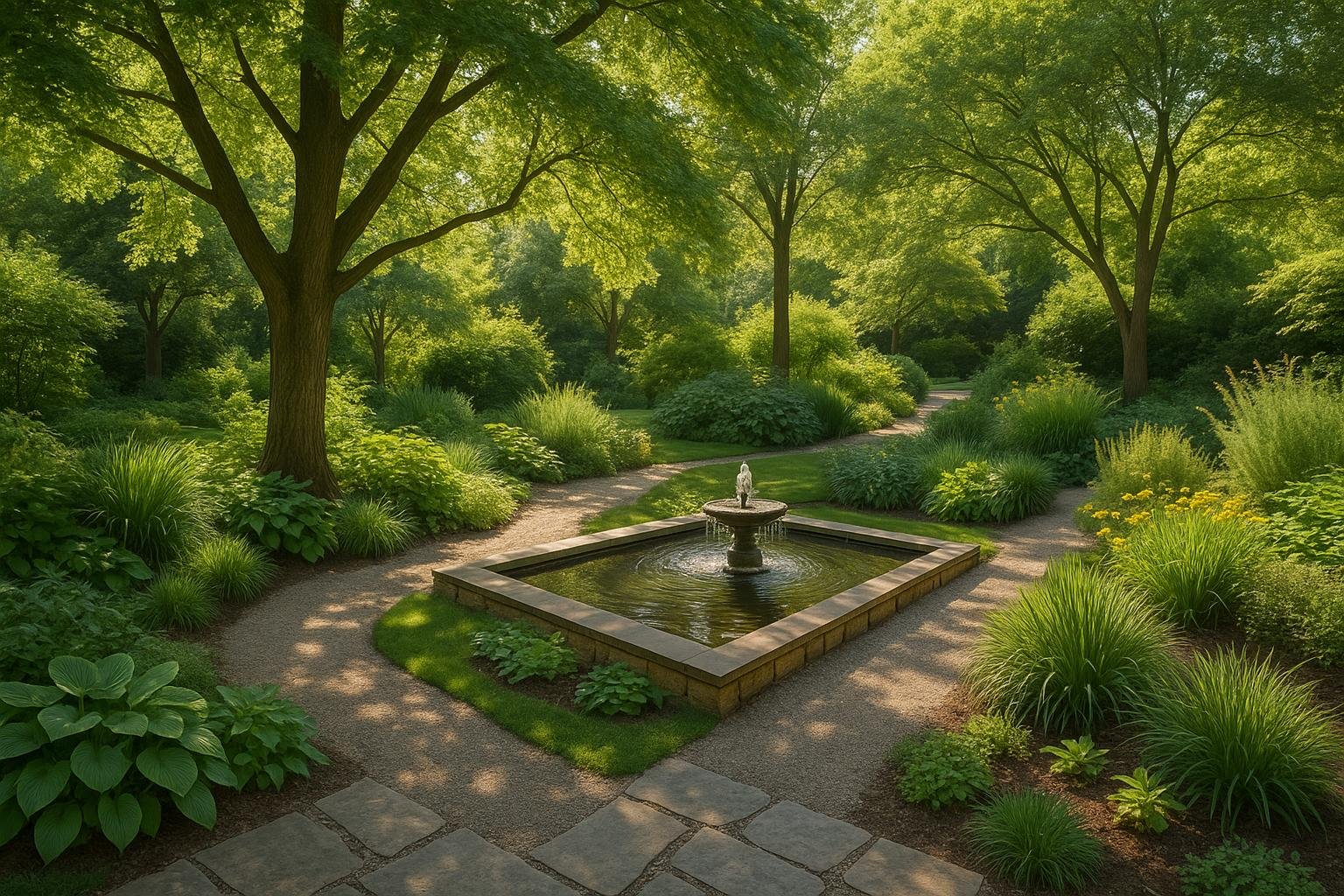
Passive cooling is a natural, energy-efficient way to keep your garden comfortable, especially during extreme temperatures. Here's a quick summary of how it works and why it's useful:
- How It Works: Passive cooling reduces heat by promoting airflow, creating shade, and using evaporative cooling through plants and water features.
- Why It Matters: It lowers garden temperatures (by up to 15°F), supports plant health, saves water, and reduces energy costs.
- Key Techniques:
- Strategic Planting: Use trees, shrubs, and ground cover to block heat and guide breezes.
- Water Features: Add fountains or misting systems for cooling through evaporation.
- Material Choices: Opt for light, reflective surfaces to minimize heat absorption.
Quick Tip: Plant deciduous trees on the south and west sides of your garden for summer shade and winter sunlight.
This guide will walk you through practical methods, climate-specific strategies, and advanced tools to optimize your garden's cooling naturally.
Core Design Elements
Plant Layout for Temperature Control
The arrangement of plants plays a key role in naturally regulating garden temperatures. By strategically positioning plants, you can create shade during the hot summer months while still allowing sunlight to warm the garden in winter. For example, planting deciduous trees on the south and west sides of your garden offers essential summer shade but lets in valuable winter sunlight when the leaves fall.
To enhance cooling, consider layering vegetation:
| Layer | Plant Type | Cooling Role |
|---|---|---|
| Canopy | Tall deciduous trees | Provides shade in summer and allows sunlight in winter |
| Mid-level | Dense evergreen shrubs | Serves as a windbreak, reducing heat in the afternoon |
| Ground | Low-growing plants | Cools the soil and helps retain moisture |
For windbreaks, place them at a distance of 2–5 times the mature height of the trees from structures. This setup blocks hot winds while still allowing airflow, making it a practical addition to your overall cooling strategy.
Cooling with Water Elements
Water features can enhance your garden's cooling effect by introducing evaporative cooling. When placed thoughtfully, these elements can noticeably lower surrounding temperatures:
- Fountains: Create cooling zones extending up to 8 feet, as the water movement encourages evaporation.
- Misting Systems: Particularly effective in dry climates, these systems can reduce temperatures by 10–20°F.
- Cascading Waterfalls: Near the drop points, temperatures can drop by 5–7°F.
For maximum effect, position water features on the south or southwest side of the garden, about 6–10 feet from seating areas. A great example of this is the Hollywood Bowl in Los Angeles, where fountains are used to cool outdoor seating during summer performances.
Surface Materials and Heat
The materials you choose for garden surfaces can have a big impact on temperature control. Hardscapes like paved areas often become significantly hotter than the air around them when exposed to direct sunlight. Opt for materials that reduce heat absorption without sacrificing functionality:
| Material Type | Characteristics | Best Applications |
|---|---|---|
| Light-colored pavers | Reflect sunlight and retain minimal heat | Main pathways |
| Decomposed granite | Permeable with moderate heat absorption | Secondary paths |
| Wood products | Low heat conductivity, comfortable to touch | Seating areas |
For instance, homeowners in Huntington Beach, CA, successfully reduced heat by using light-colored, low-density pavers.
"Using too many different materials creates division in a garden, so limit your choice to three. This will bring cohesion to your design and ensure different areas work in harmony together." - Manoj Malde, Designer
Passive Cooling: 3 of the Best Design Strategies (How to Stay Cool with No AC!)

Cooling Methods by Climate Zone
These approaches build on earlier design principles, fine-tuning passive cooling techniques to meet the unique demands of different climates.
Hot and Dry Regions
In arid areas like Arizona and Nevada, passive cooling revolves around reducing solar heat exposure and managing moisture. Strategies include using shade, light-colored materials, and drought-resistant plants. Garden designs often feature native ground covers, rock formations suited to the environment, and trees that create a natural canopy to shield the ground from direct sunlight. A great example is Masdar City in Abu Dhabi, where automated shading systems adjust throughout the day to optimize cooling, blending modern innovation with traditional passive cooling methods.
Hot and Humid Areas
In places with high humidity, such as Florida and Louisiana, cooling strategies must tackle both heat and moisture. The key lies in enhancing airflow and promoting evaporation. Plant arrangements are designed to create open channels that guide breezes, while breathable ground covers allow moisture to evaporate more effectively. In Costa Rica, landscape architect Claire Redsun showcased how elevating structures - like villas on raised piers - can take advantage of cooling breezes while reducing the impact of humidity.
Mild and Coastal Zones
Coastal areas present a different set of challenges, balancing exposure to salty air with the need to capture cooling winds. Gardens in these regions benefit from permeable windbreaks, salt-tolerant vegetation, and layouts that guide breezes through the space. Even a gentle breeze of 1.1 ft/s at 50% relative humidity can make the air feel about 5°F cooler, offering noticeable relief.
sbb-itb-4d6a8dd
🚀 Ready to Reinvent Your Garden?
Join thousands of homeowners who have transformed their gardens using our AI design tool. Upload one photo to explore endless possibilities.
Get your AI garden designs →Advanced Cooling Techniques
Building on traditional passive cooling methods, these advanced strategies incorporate modern technology to improve temperature regulation in garden spaces.
Underground Cooling Systems
Underground cooling systems - often called earth tubes or climate batteries - utilize the earth's consistent temperature to naturally cool garden areas. At a depth of around 6 feet, the soil maintains a steady temperature of 50-55°F throughout the year. These systems are far more efficient than conventional cooling methods.
Research in Montana has shown these systems work effectively in Plant Hardiness zones 3 and 4. To achieve the best results, it's recommended to keep at least two feet of spacing between pipe rows and levels to enhance soil charging capacity. While smaller residential systems typically cost between $2,000 and $5,000, larger commercial setups can run from $5,000 to $15,000.
"Geothermal systems are [at least] twice as efficient as the top-rated air conditioners and almost 50% more efficient than the best gas furnaces, all year round." - Alexander
These systems highlight how blending natural processes with technology can lead to even more innovative solutions, such as multi-functional shade structures.
Multi-Purpose Shade Structures
Modern shade structures not only cool garden spaces but also provide additional functionality. Properly designed and positioned, these structures can lower air temperatures by as much as 6°F through shading and evapotranspiration.
For the most effective cooling, consider the following:
- UV-resistant fabrics for long-lasting protection
- Architectural integration to harmonize with the garden's design
- Weather-resistant coatings for durability
- Natural airflow patterns to enhance cooling
Under well-crafted shade structures, temperatures can be up to 25°F cooler compared to nearby exposed areas. Choosing high-performance, durable materials ensures these structures remain effective over time.
Computer-Aided Plant Spacing
To refine garden cooling further, computer-aided spacing uses precise data to optimize plant placement. This method evaluates key thermal indicators like Sky View Factor (SVF) and Green Plot Ratio (GnPR) to enhance cooling performance.
Strategic plant spacing contributes to cooling by:
- Allowing better air circulation while maintaining shade
- Reducing humidity buildup and avoiding heat-trapping dense growth
- Balancing exposure to create the most effective cooling environment
Tools like AIGardenPlanner use advanced algorithms to calculate the optimal spacing for plants based on local climate conditions and plant characteristics. By factoring in mature plant size, growth patterns, and weather trends, these tools provide tailored recommendations for garden layouts.
This thoughtful approach prevents overcrowding and overexposure, ensuring a garden that stays cool and thrives in its environment.
System Care and Updates
Regular Maintenance Tasks
Passive cooling systems need consistent attention throughout the year to work at their best. Here's a quick guide to seasonal maintenance tasks:
| Season | Essential Tasks | Frequency |
|---|---|---|
| Spring | • Clean water features and inspect pumps • Check shade structures • Trim winter growth • Replace ERV filters |
Bi-weekly |
| Summer | • Monitor water levels • Adjust shade covers • Maintain proper plant spacing • Clean cooling system components |
Weekly |
| Fall | • Remove debris from water features • Replace ERV filters • Prepare shade structures for winter • Prune for better airflow |
Monthly |
| Winter | • Inspect structural integrity • Keep minimal water circulation • Monitor plant health • Clean inactive components |
Monthly |
By staying on top of these tasks, you'll keep your system running smoothly year-round.
Common Problems and Solutions
Issues like algae buildup and clogs can disrupt water features, lowering their efficiency. Combat these problems by regularly cleaning pumps and introducing beneficial bacteria to maintain balance.
Key areas to focus on include:
- Water Feature Care: Ensure proper flow rates by maintaining pumps regularly.
- Shade Structure Maintenance: Inspect shade structures every quarter to identify and address any wear and tear.
- Plant Health Monitoring: Include plant checks during your bi-weekly maintenance to catch and fix any issues early.
Weather Pattern Adjustments
Once routine maintenance is handled, tweak your system to match the current weather conditions for maximum efficiency.
- Seasonal Adjustments: Keep an eye on local weather and fine-tune your cooling features. For instance, during the hottest summer months, increase shade coverage and adjust water feature schedules to optimize cooling.
- Climate Response: Take advantage of tools like AIGardenPlanner to track climate changes. This can help you refine plant placement and reposition shade structures to align with shifting weather patterns.
- System Optimization: Remember, unshaded east and west walls can absorb nearly double the solar heat compared to north and south walls during midsummer. Adjust shade structures and vegetation strategically to counteract this and boost cooling effectiveness.
Summary
Key Benefits Review
To wrap things up, passive cooling can make a noticeable difference in your garden's comfort and functionality. By using the right techniques, gardens can lower air temperatures by as much as 15°F, thanks to the combined effects of ground cover and evapotranspiration. This not only makes outdoor spaces more enjoyable but also helps create a thriving and eco-friendly environment.
Here are some standout benefits:
- Energy Efficiency: Cuts down on the need for artificial cooling systems.
- Natural Cooling: Relies on plants and soil to regulate temperatures.
- Boosts Property Appeal: Enhances the aesthetic value of your home.
- Reduces Urban Heat: Helps mitigate the heat island effect in cities.
- Eco-Friendly Solution: Offers a natural alternative to mechanical cooling.
Getting Started Steps
Ready to introduce passive cooling into your garden? Follow these steps to get started:
- Assess Your Space: Take note of sun exposure, wind directions, and the vegetation already in place. Focus on areas that get intense afternoon sun, especially on the west side.
- Add Strategic Shade: Plant deciduous trees on the southern and western sides of your property. Use pergolas or trellises with climbing plants to shade outdoor areas.
- Incorporate Water Features: Place water features in shaded spots to maximize their cooling effect. Position them to direct cooled air toward your living spaces.
Once these basics are covered, you can explore advanced tools to fine-tune your garden design.
AIGardenPlanner Features
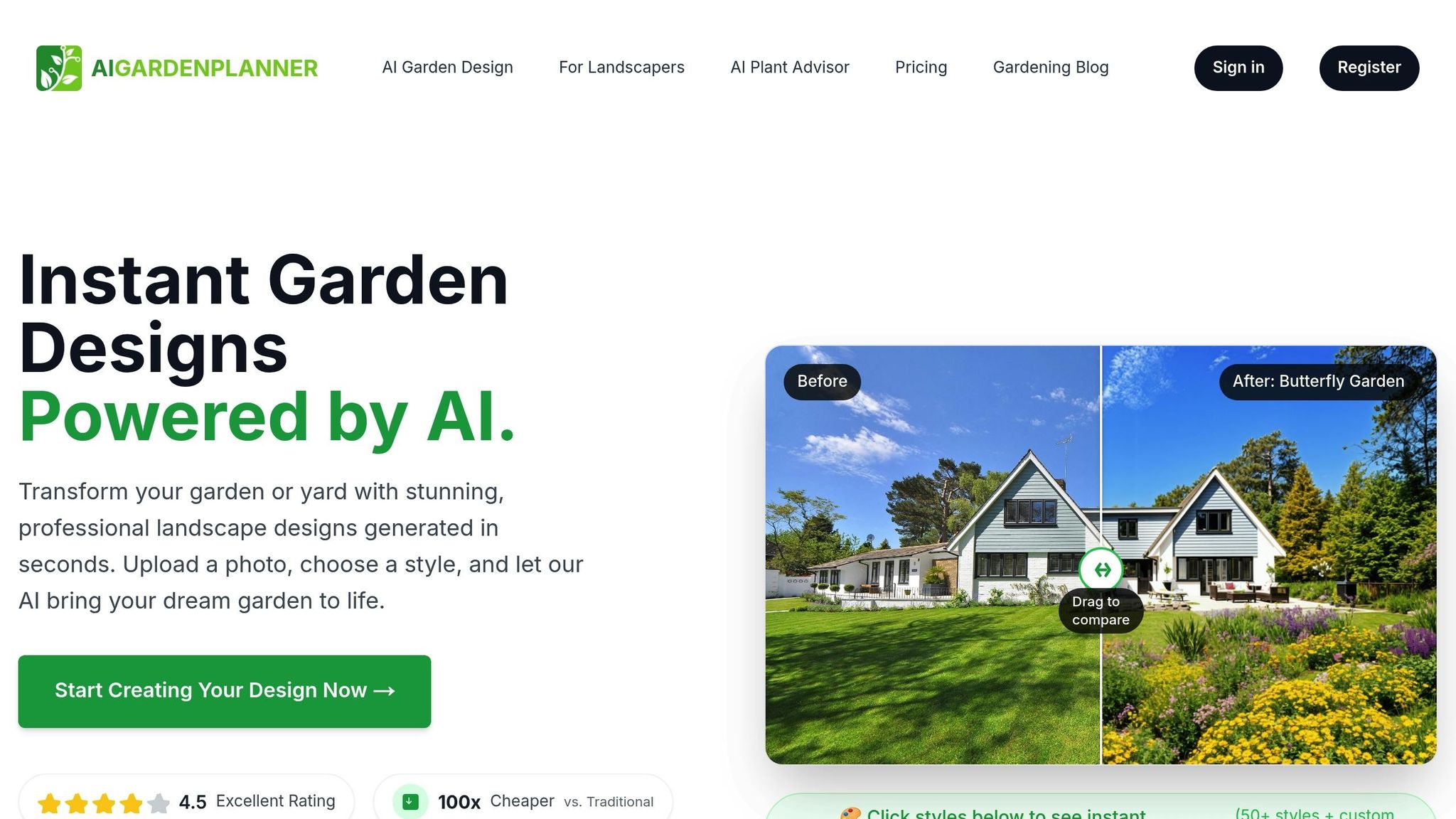
Take your garden design to the next level with AIGardenPlanner. This tool simplifies the process of creating a cooling-optimized garden with features like:
- Climate-Based Suggestions: Get plant recommendations tailored to your region.
- Custom Layout Options: Choose from over 50 garden styles designed for cooling.
- Professional Design Tools: Turn your photos into detailed, cooling-focused plans.
- Maintenance Tips: Access comprehensive growing guides to keep your garden thriving.
"Passive cooling is the least expensive means of cooling a home, especially in environmental terms." - YourHome
With this platform, you can strategically place plants and features for maximum cooling while ensuring your garden remains visually stunning throughout the year.
FAQs
What’s the best way to place water features in my garden for passive cooling?
To get the best cooling effect from water features in your garden, place them in shaded spots. This helps reduce evaporation and keeps the air around them cooler. Positioning them near windows or doors can also allow cool air to flow into your home, naturally lowering indoor temperatures.
For an extra cooling boost, plant trees or shrubs around the water features to provide additional shade and increase humidity. However, avoid placing them in areas exposed to strong winds, as this can cause water to evaporate faster. By carefully combining water features with other landscaping elements, you can create a more comfortable outdoor space while also enhancing the visual charm of your garden.
What are the best plants for creating natural shade in summer while letting sunlight through in winter?
Deciduous trees are a great option if you're looking to create a natural canopy that offers shade in the summer while letting sunlight through in the winter. Trees like oak, maple, and elm are popular choices because they shed their leaves in colder months, allowing more light to reach the ground.
For smaller yards or tighter spaces, understory trees such as serviceberry or redbud work well. These trees thrive in partial shade and still allow plenty of light to filter through. If you'd like to add some structure while keeping an open, natural vibe, consider multi-stemmed shrubs like oakleaf hydrangea, which provide dappled shade and a unique texture.
How can I adapt passive cooling techniques in my garden for hot and dry versus hot and humid climates?
Passive cooling techniques in your garden need to align with the climate you’re working with.
If you’re in a hot, dry climate, your main goals are to cut down on heat and hold onto moisture. Incorporate shade structures to protect plants, and use materials like stone or concrete that act as thermal mass, helping to regulate temperature. Adding drought-tolerant plants can also keep the soil cooler and minimize water loss through evaporation.
For hot, humid climates, the focus shifts to boosting airflow and controlling humidity. Opt for open designs that encourage breezes, and plant trees in spots that naturally guide airflow. You might also want to add water features, which can provide some evaporative cooling. Stick to native plants that thrive in humid conditions - they’re easier to maintain and can make your garden more resilient.
🎨 Visualize Your Dream Garden Today!
Transform any outdoor space into a professional landscape design in minutes. Just upload a photo, choose your style, and let our AI do the rest.
Start your garden transformation now →Related posts
Related Articles

AI in Drone Gardening Analytics
Explore how AI-powered drones are revolutionizing gardening with precise analytics, resource optimization, and sustainable practices for better plant health.
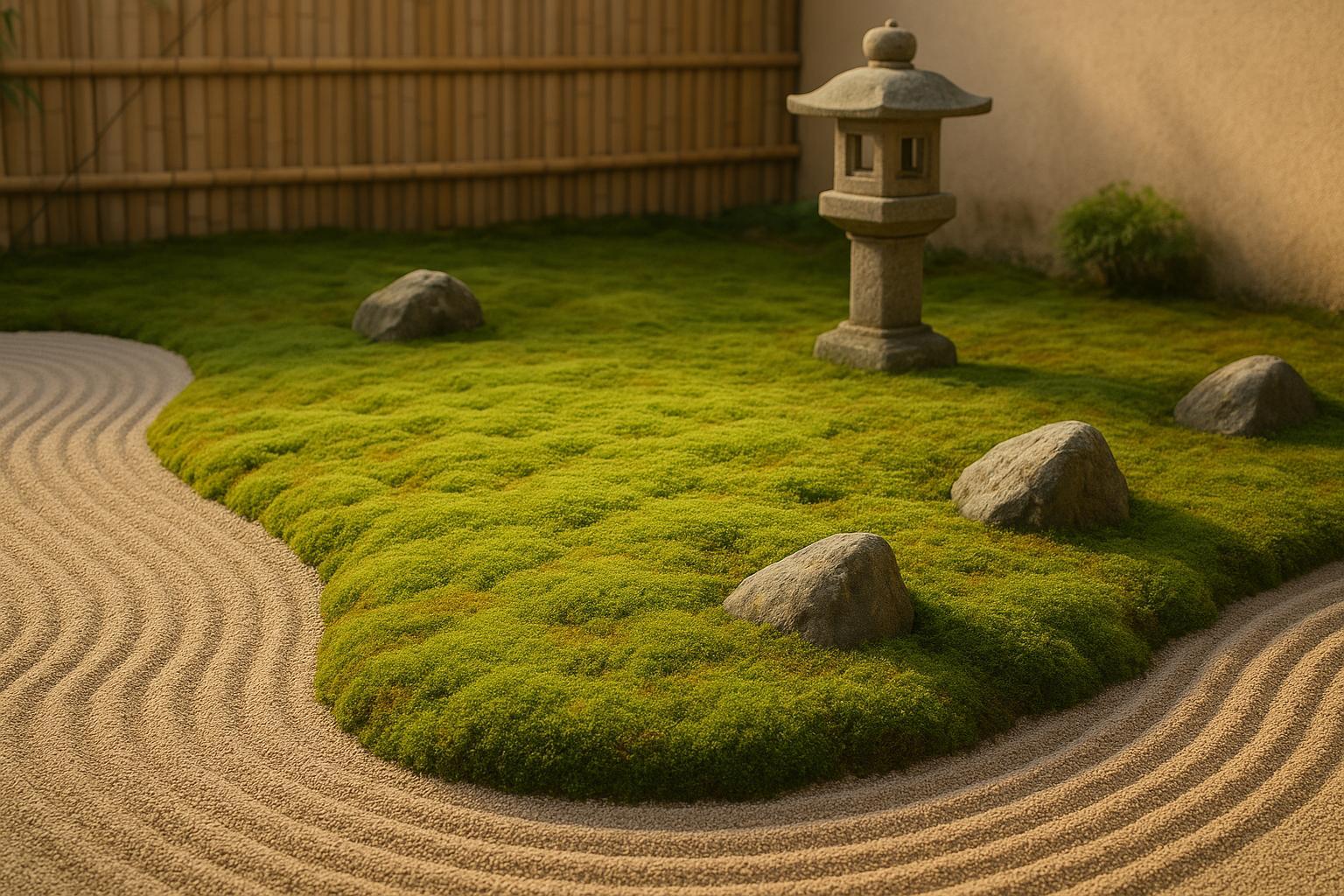
Ultimate Guide to Moss Cultivation for Zen Gardens
Learn how to cultivate moss for Zen gardens, ensuring a tranquil atmosphere with minimal maintenance and tailored care techniques.
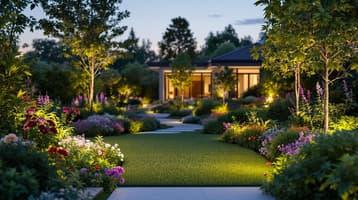
Ultimate Guide to Smart Garden Lighting Setup
Learn how to enhance your outdoor space with smart garden lighting through effective planning, installation, and automation techniques.
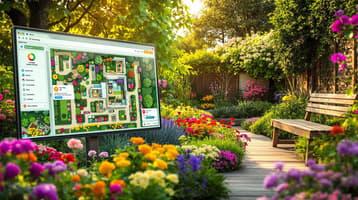
AI Garden Design vs. Traditional Methods
Explore how AI garden design tools outperform traditional methods in speed, customization, and ease of use for both amateurs and professionals.
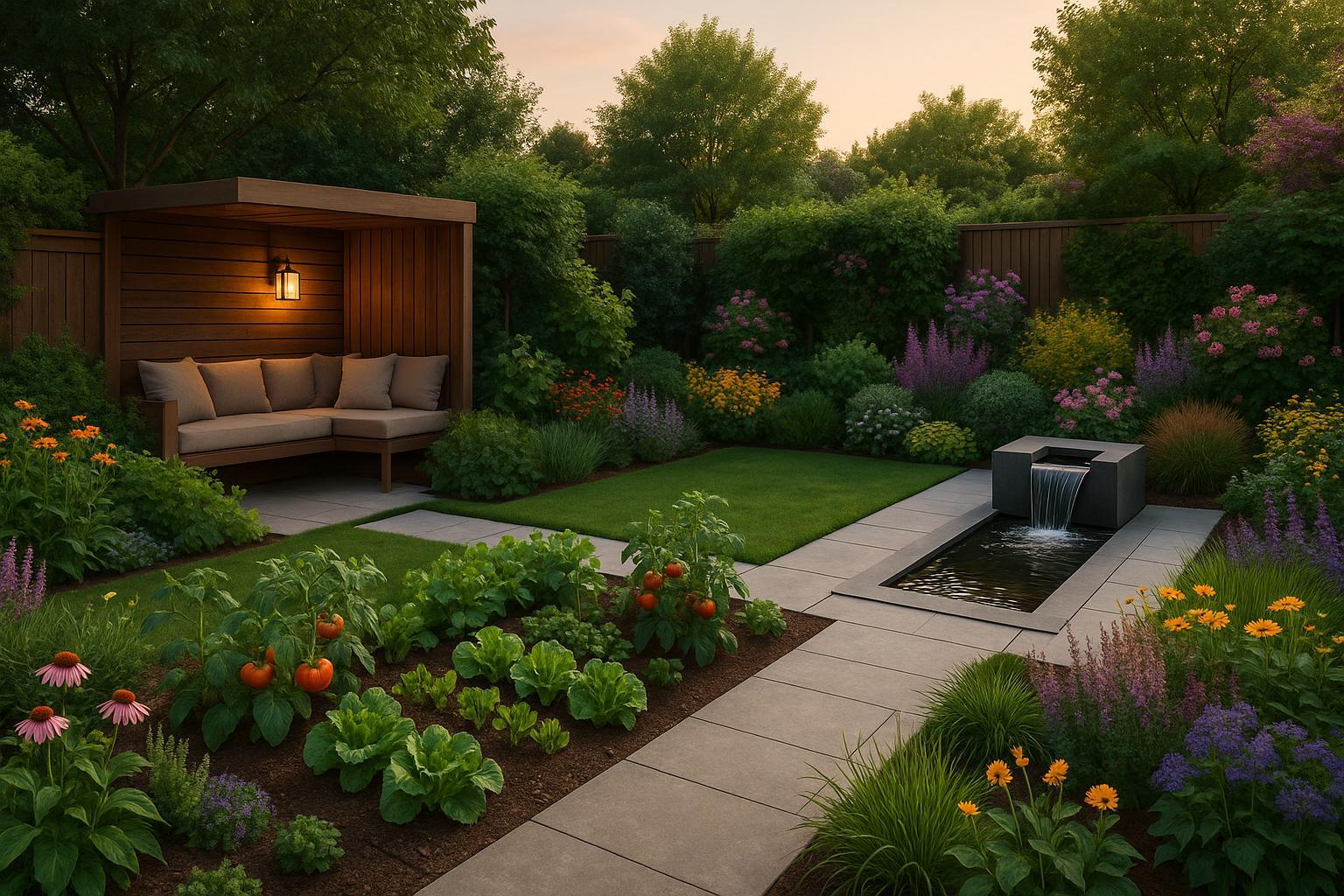
AI in Garden Design: Optimizing Multi-Use Spaces
Explore how AI simplifies the design of multi-use gardens, balancing aesthetics and functionality for diverse outdoor spaces.
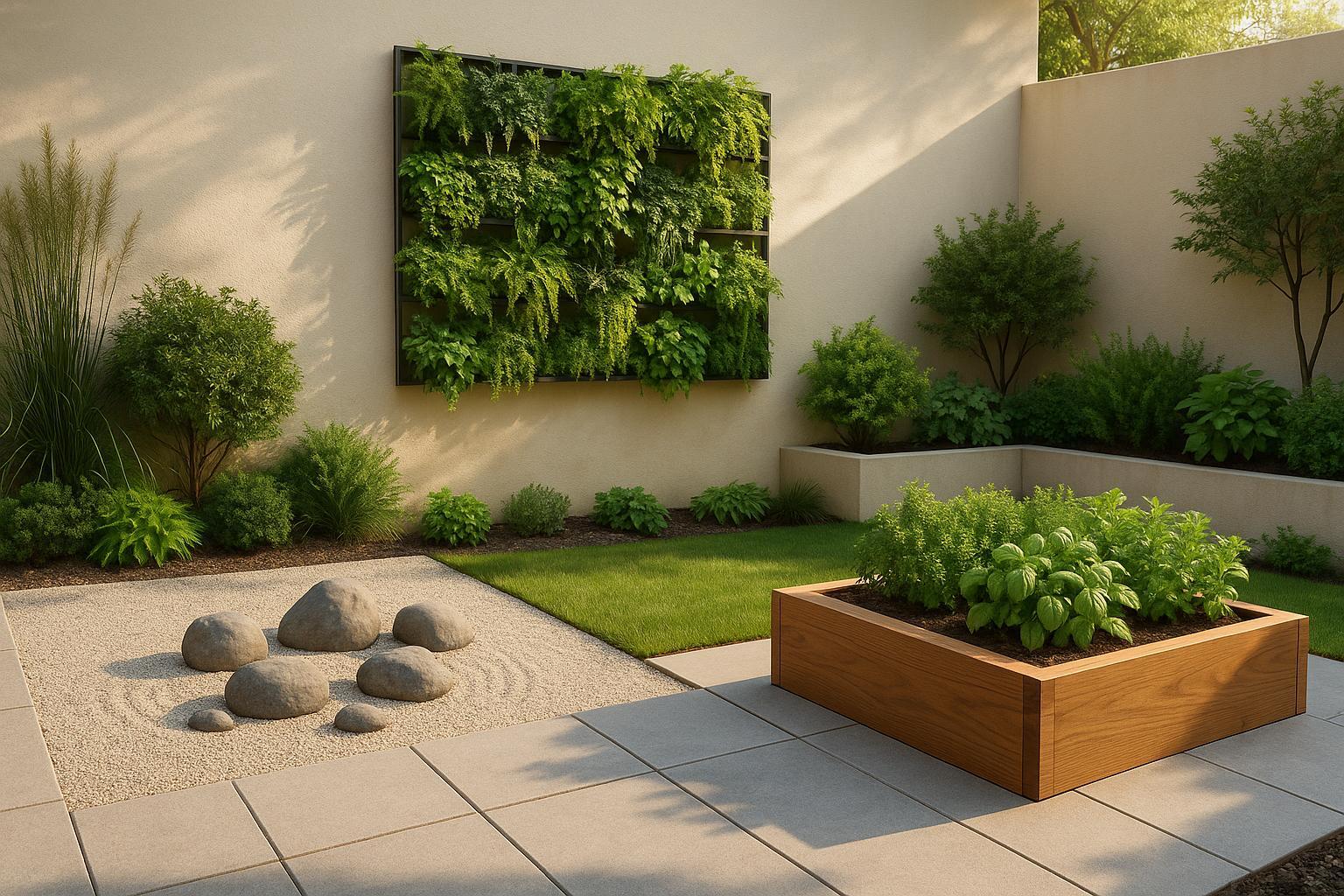
Top 7 AI Garden Styles for Any Space
Explore seven distinct AI-driven garden styles, from modern minimalism to lush edible landscapes, tailored to fit any space and climate.